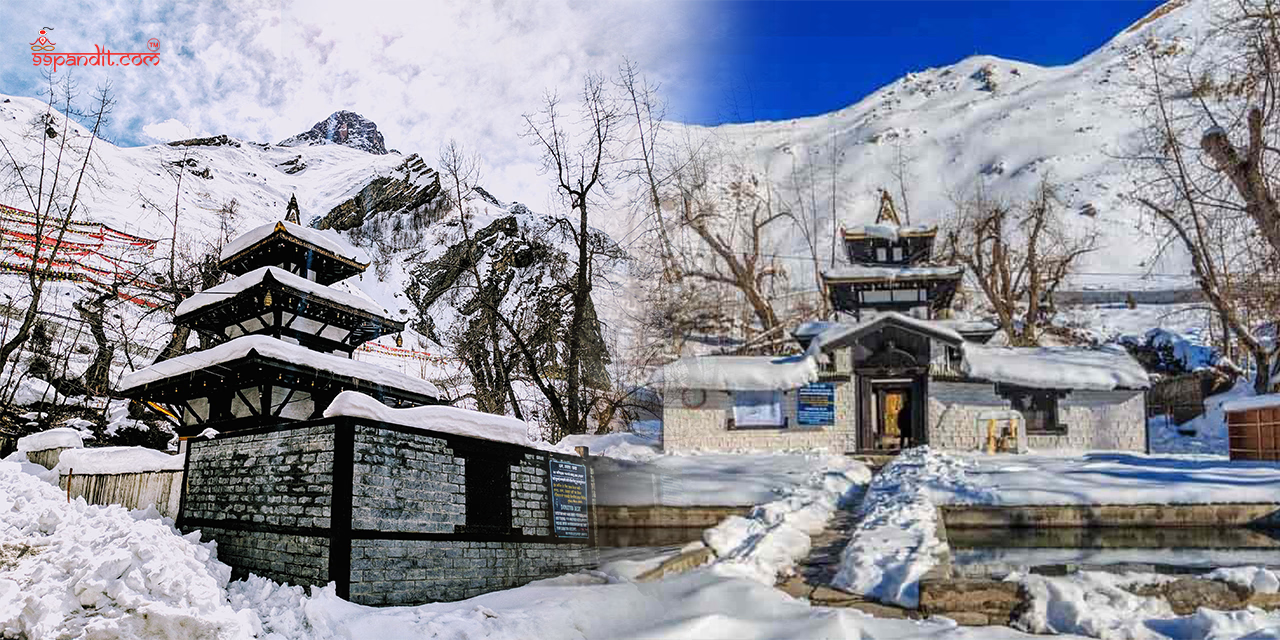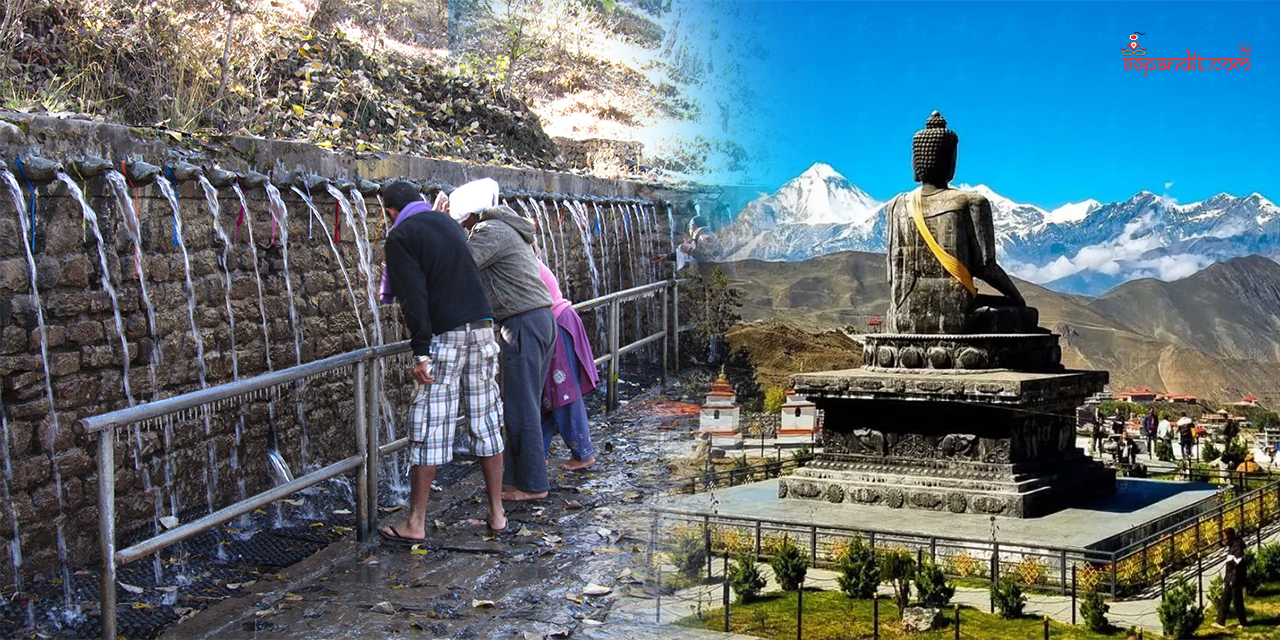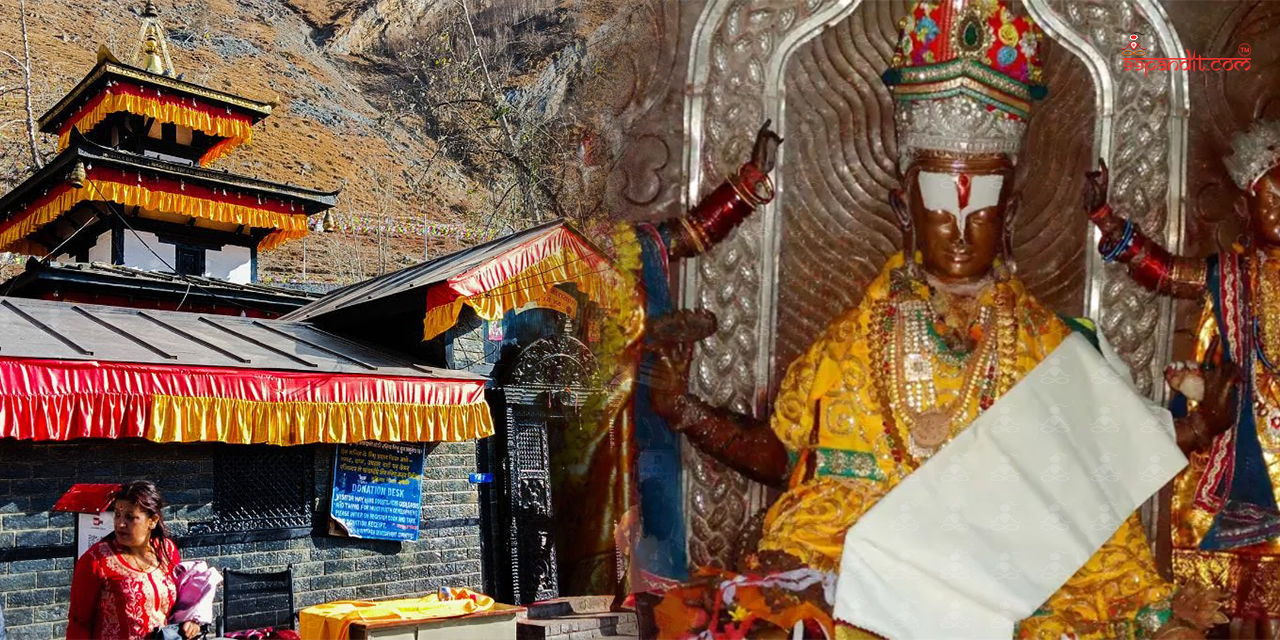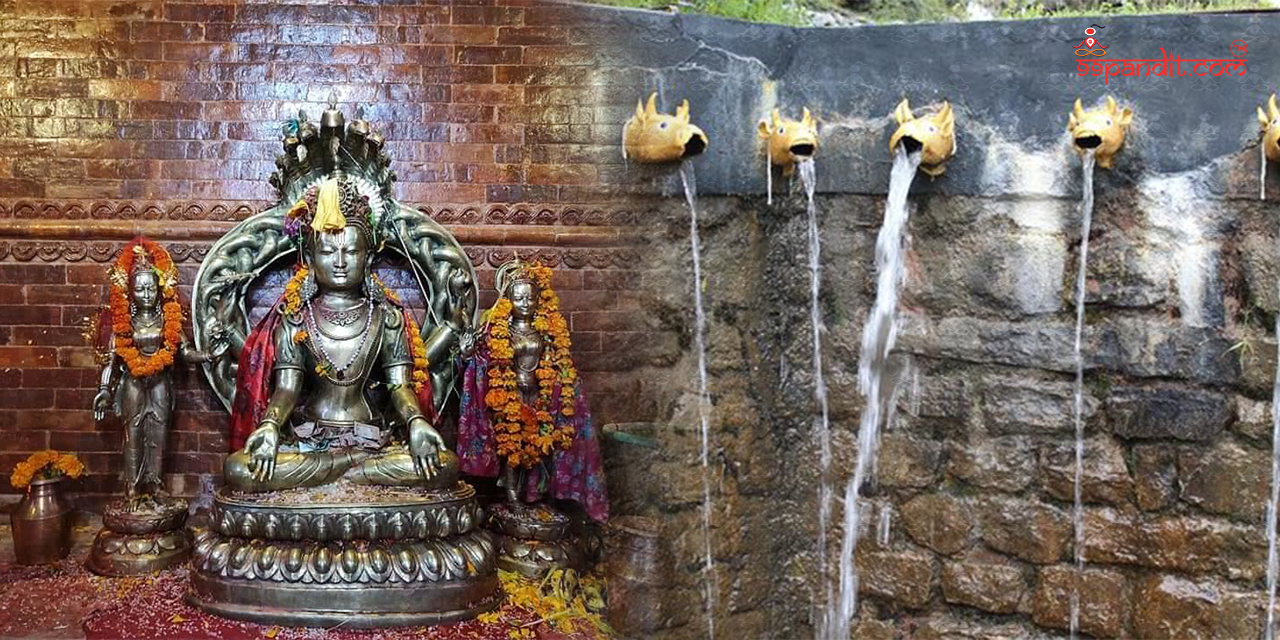Top 7 Famous Temples in Varanasi You Can’t Miss
Famous Temples in Varanasi: Varanasi, also called Kashi or Banaras, the city of Lord Shiva, is believed to achieve liberation.…
 0%
0%

The Muktinath temple in Nepal is one of the auspicious places, which is located in the Muktinath valley in Mustang, Nepal.
The word Muktinath derives from two words: Mukti, meaning salvation, and Nath, meaning God. The temple is dedicated to lord Vishnu, it is considered a religious symbiosis between Hindus and the Vaishnavites.

The temple is located amidst the beautiful landscapes of the Annapurna mountain range in Nepal, known as a testimony to the country’s rich cultural heritage and natural beauty.
Starting a journey to this sacred temple not just promises a spiritual experience, but also lets you experience its rich history and the influence of two major religions, Hinduism and Buddhism.
This article covers the religious significance of the temple, the cultural blend of Hindu and Buddhist customs, and the fascinating legends associated with it.
You will also know helpful guide tips, trekking details, and the right time to visit the temple. Keep reading the article.
The Muktinath temple opens at 5 AM and closes at 8:30 PM. The temple also organizes multiple rituals at this time. The followers perform the rituals like aarti and pujas.
Below are the timings of the Muktinath Temple:
| Rituals | From | To |
| Morning Darshan | 5:00 AM | 12:00 PM |
| Evening Darshan | 2:00 PM | 9:00 PM |
| Seva Sankalpa | 8:00 AM | 9:00 AM |
| Tirtha Prasad | 1:00 PM | 3:00 PM |
| Pooja Timings | 6:30 PM | 8:30 PM |
The meaning of Muktinath has deep spiritual importance that attracts devotees from all around the world.
Translating the word comes with the meaning of ‘liberation’, ‘salvation’, and ‘nath’ means ‘lord’, or ‘protector’.
Hence, Muktinath is often translated as ‘lord of liberation’, a place where the soul can get moksha from the cycle of birth and death.
In short, Muktinath means ‘the protector of liberation’ – an auspicious place where Hindu and Buddhist devotees visit for spiritual freedom and salvation.
Hindu texts refer to Muktinath as a place that helps devotees achieve moksha, the ultimate religious objective of liberation from the pains and life’s sufferings.
Buddhists visit the temple as a special site of enlightenment where followers can liberate themselves from attachment to the world.
The temple is found in an area between the two major belief systems, producing a place acknowledging both beliefs, and an energy distinctly felt by people from multiple religions.
Muktinath temple in Nepal has been a place of great spiritual significance. It’s believed that Lord Vishnu Murthi, Goddess Sri Devi, and Bhoo Devi bless Jeevan Mukthi here.
Mukthinath is also considered one of the eight holy places popular for honoring lord vishnu, swayambhu kshetras, or divya kshetras.

Along with Muktinath, seven other places are part of Svayam Vyakta Kshetras called Badrinath, Pushkar, Naimisharanya, Tirupati, and Thotadri. The water is provided via 108 bull faces in the outside courtyard.
The history of Nepal’s Muktinath temple dates back to the 19th century. It is mentioned that ‘Sabarna Prabha’, a Nepalese queen, started constructing the temple. Hindus are believed to have developed this Vishnu temple.
A well-known Tibetan yogi named Shabkar visited the Muktinath temple in Nepal in 1818 and stayed there for many days to learn the place in more detail.
According to Tibetan Buddhism tradition, Guru Rinpoche (also known as Padmasambhava), the creator of Tibetan Buddhism, is believed to have meditated at Muktinath on his way to Tibet.
Damodar Kunda, the main origin of Shaligram and the Gandaki river, is found close to the Muktinath temple.
The kund, also known in Tibetan as ‘Men-Chu’, is linked to Guru Rinpoche’s life and is termed the beginning of Mukti Kshetra.
Indian mythology shows that Lord Shiva had an enormous fight with Jalandhar (the king of Asuras, who was powerful).
Jalandhar was a schemer who went to an extreme by assaulting Kailash in order to acquire Parvati (wife of Lord Shiva). Then Jalandhar transformed himself and used his powers to emulate Shiva.
Because of her spiritual power, Parvati could easily perceive reality, and she instantly called upon Shiva to help her.
Soon thereafter, they fought, but with the loyalty of her wife, Jalandhar was mostly safe. Later, other gods choose to employ a little strategy to overcome the great evil.
In order to appear before Vrinda, Lord Vishnu exerts his power to appear like a duplicate of Jalandhar.
Vrinda was inattentive and did the same as her husband. She, then, abandons Lord Shiva, and he kills Jalandhar.
After becoming aware of the truth, Vrinda swears at Lord Vishnu and tells him to spend the remaining days of his life as a stone (Shila).
Then Lord Vishnu takes birth as Shaligram in the Muktinath region. Vrinda kills herself by cursing, and the Tulsi plant grows out of her ashes.
Lord Vishnu appreciates Vrinda and loves her due to her fidelity, which impressed him very much. As a result, there should be a Tulsi leaf when venerating the Shaligram.
The Muktinath temple intricately represents the interrelated relationship between Hinduism and Buddhism.
A Buddhist monk is available at the temple to offer prayers along with a local nun who looks after the worship.
This is the only Divya desam temple outside of India, and it ranks 106th out of 108 Divya desams in Hinduism.
It’s also one of the char dham in Nepal and known as mukti kshetra, which means the ‘liberation arena’ (moksha).
In the Vishnu Purana, there are scripts and the Gandaki mahatmya that describe the importance of this divine temple. The Sri Vaishnava literature says that Thiru Saligramam is its old name.
The shaligram shila, which is the non-anthropomorphic form of Vishnu, is believed to have originated from the neighbouring Gandaki river.
Muktinath is known as one of the 24 tantric sites and an important place for Dakinis, goddesses called sky dancers, among the Tibetan Buddhists.
They identify the murthi of Muktinath temple as a manifestation of Avalokitevara, who signifies the Buddha’s collective compassion.
It’s also known as Chumig Gyatsa by Buddhists, due to its hundred waters, which is named in Tibetan.
The Muktinath temple resides tucked away in Nepal’s Muktinath Valley, at the core of the Thorong La Mountain pass in Mustang.
This is adjacent to the Ranipauwa village in the Annapurna area of Nepal. Many international tourists visit the temple, mainly while on the Annapurna Circuit trek.

This is established at an altitude of 3800 meters above sea level, which makes it one of the highest temples in the world.
It has a beautiful view of the Tibetan plains to the north and the snow-capped Annapurna mountains to the south.
There are different ways to reach the Muktinath temple in Nepal. It can be visited using these ways:
Seeking darshan at the lord vishnu temple by road, it takes around 6 nights/7 days by the route Kathmandu – Pokhara – Jomsom – Muktinath. This distance from Kathmandu to Muktinath is about 400 km.
If you’re taking the Prithvi Highway from Kathmandu to Pokhara and then going through the towns of Jomsom, Tatopani, Ghasa, Marpha, and Kagbeni, you can reach the temple.
Travelling to the Muktinath temple by road takes (4 nights / 5 days) by the route Kathmandu – Pokhara – Jomsom – Muktinath.
The closest airport to the temple is Jomsom. There are no direct flights accessible from Kathmandu to Muktinath. First, you have to reach Pokhara, then get a flight to Jomsom.
The flight routing from Kathmandu to Pokhara often takes one hour, and the flight from Pokhara to Jomsom allows you to reach in an hour.
From Kathmandu to Muktinath, a helicopter is also available. It takes up to one and a half hours to get to Nepal’s Muktinath temple by helicopter.
You can easily trek from Ranipauwa to the Muktinath temple in just 30 minutes, approximately.
The temple of Lord Vishnu is located in a trekking and conservation area. Hence, two permit passes are required to enter this zone.
One of the trekker’s information management systems permits, and the second is the Annapurna Conservation Area Project permit.
People who are travelling to the Muktinath temple should have these passes to enter the area.
Traveling to Muktinath Temple could be a profound experience, and selecting the right time to visit the temple can boost it manifold.

Let’s find out the ideal time to visit, depending on weather conditions and the vibrant festivals that the region offers.
Spring (March to May):
Summer (June to August):
Autumn (September to November):
Winter (December to February):
So we have reached the end of this detailed guide. Let’s take a moment to discuss the unique and different journey you’ll have at the Muktinath temple.
The number of followers of this holy place is more than just a religious experience; it’s also a choice to learn about the region’s rich culture, history, and stunning natural scenery.
This temple is not just a sacred place, but a transformative one for the spirit and heart. There are 108 sacred water spouts, an eternal flame, and a panoramic scene of the Himalayas that will generate everlasting memories for all pilgrims.
Whether you’re a spiritual pilgrim, a curious traveller, or an adventure seeker, the place gives experiences that will power your mind and possibly enhance your life.
The purpose of seeking liberation in Muktinath is relevant to all, irrespective of their cultural background; hence, no two experiences will be similar.
Are you planning your trip to Muktinath? Go through this important information to simplify your journey and make a booking in advance.

100% FREE CALL TO DECIDE DATE(MUHURAT)

Table Of Content
Filters by categories
All Pujas
Puja On Special Events
Upcoming Pujas
Dosha Nivaran Pujas
Mukti Karmas
Filters by Trending Topics
Filters by Regions
North Indian Pujas
South Indian Pujas